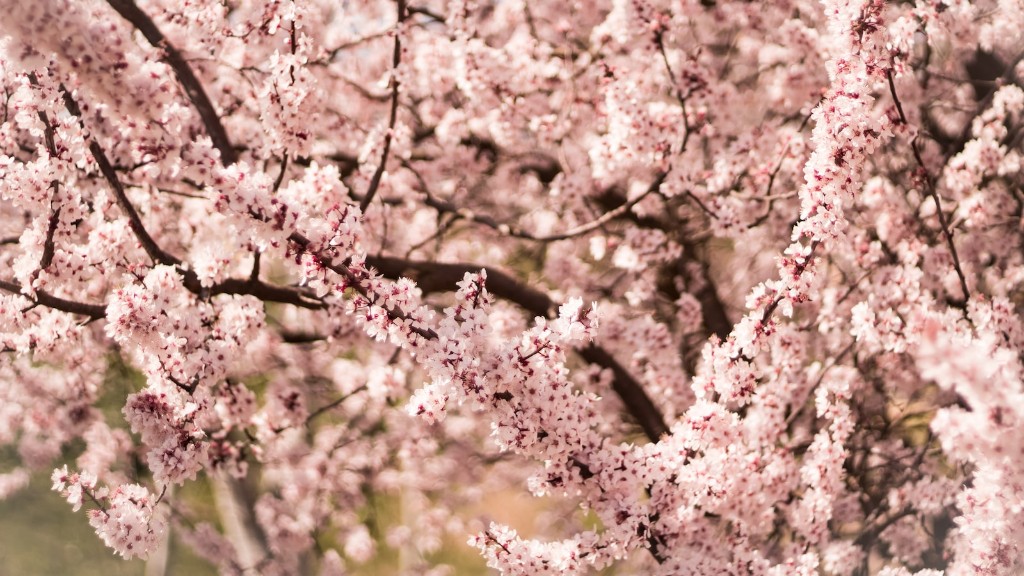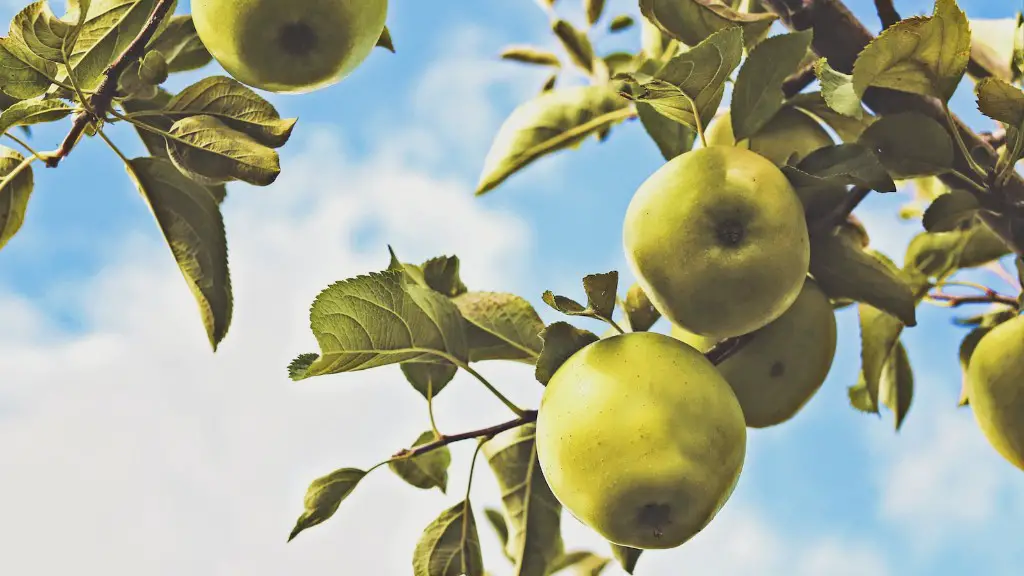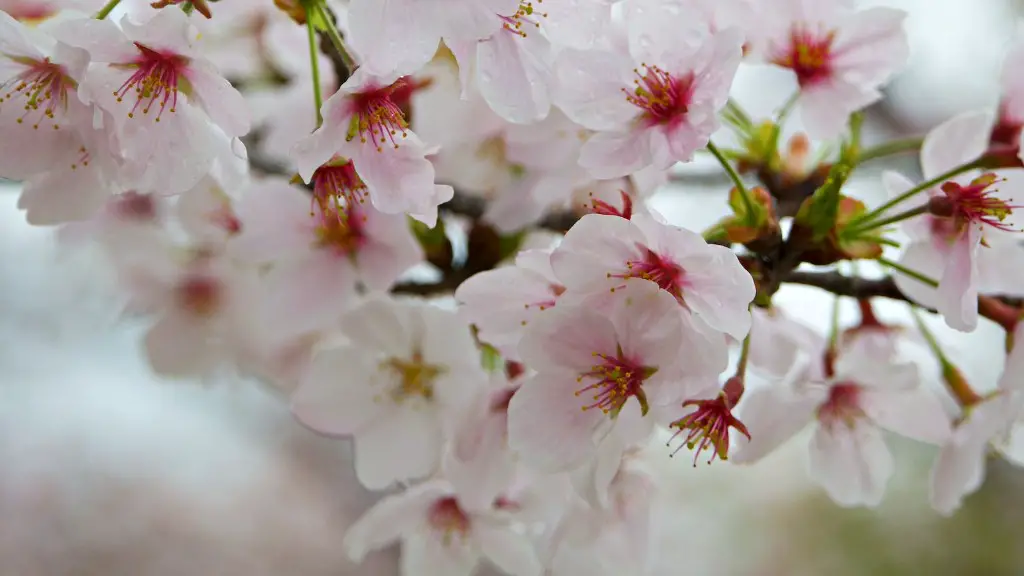Finding the Right Spot for Your Cherry Plum Tree
Cherry plum trees can be easy to look after and rewarding for your garden. Before you begin planting, it is important that you take the time to find the best spot for the tree to thrive. The most suitable location for your tree should be in a sunny, open area with plenty of space and good air circulation. The soil should be well-draining and nutrient-rich, such as loam. Additionally, the area should have good moisture retention as cherry plum trees require regular waterings, especially during their first year.
Choosing the Right Variety
When you are selecting a cherry plum tree, there are a variety of choices available. You’ll want to take into account the size of the tree you’re after as some varieties can ultimately reach 10 ft tall. If you’re inexperienced or don’t want a large tree, you may consider sourcing a smaller or dwarf variety. You may also want to take into account your climate and pollination requirements. While some cherry plum trees self-pollinate easily, others may need cross-pollination. So, be sure to check the type of tree you are buying and the pollination needs.
Preparing the Soil
It is important that you prepare the soil correctly before planting a cherry plum tree. The soil should have a pH of 6.0 to 7.0 and should be well-draining, with a mix of organic matter and sandy loam. If necessary, you can adjust the pH of the soil by adding organic matter such as bark or compost. Additionally, be sure to dig a hole that is about three times the width of the root ball and about the same depth. If the soil is poor, you can also create a mound or raised bed for your tree to be planted in.
Planting the Tree
Before planting your tree, select a spot with plenty of space and good exposure to sunlight. You can then measure the depth and width of the hole, ensuring that it is large enough for the roots. Place some compost or small stones at the bottom of the hole and these will help with drainage. Then, you can carefully remove the tree from the pot. If necessary, loose soil can be gently brushed off the roots. Place your tree in the center of the hole and begin to back fill. As you back fill, be sure to press the soil gently down around the roots so that they are well-packed. Give your tree a deep watering right away, and if the temperature of your environment allows, mulch can be added to provide moisture, suppress weeds, and provide essential nutrients.
Caring For A Cherry Plum Tree
After planting, you should water your tree regularly, especially during the first year, while it is establishing itself. You can also add compost to the roots every couple of months to ensure that the tree is receiving the necessary levels of nutrients. Be sure to check for any signs of disease or pests, and prune dead or dying branches as needed.
Harvesting Cherry Plums
While cherry plums come in a variety of shapes, sizes and colors, they are all ready to be picked when they have a deep red or purple color. If you’re not sure if they are ripe, pick one off the tree and taste it. The best time to pick them is during the late summer and early fall months.
Benefits of Cherry Plums
Cherry plums are an excellent addition to any garden as they are low in calories and packed with essential vitamins and minerals. A single cherry plums contains about 20% of your daily intake of Vitamin C and just 28 calories. Furthermore, their sweet and tart flavour makes them versatile for a variety of recipes and dishes and is known to be a natural remedy for an upset stomach.
The Fruit and Its Uses
Although cherry plums are small, the fruit is incredibly versatile and can be used in a number of recipes, both sweet and savoury. From a classic cherry clafoutis to a tart cherry relish and even savoury cherry glazed meats, the fruit has a unique flavour that can enhance any dish. One of the most popular uses for cherry plums is to make jam and jelly, however, these are time consuming processes and require more time and ingredients than simply eating them fresh.
Nutrition and Health Benefits
Cherry plums contain a range of essential vitamins and minerals, including magnesium, potassium, vitamin C and dietary fiber. They are also packed with antioxidants, which neutralize free radicals in the body and reduce inflammation. Additionally, cherry plums contain a group of compounds known as quercetin, which has been known to reduce the risk of various cancers and heart disease.
Pest and Disease Management
Cherry plum trees can be prone to various diseases and pests, such as plum curculio, caterpillars, aphids, powdery mildew and leaf spot. To avoid problems, it is important to keep your tree well-watered and to provide adequate ventilation. Additionally, prune branches as needed to increase air flow and remove any fallen fruit as soon as possible. If you do notice any signs of disease, be sure to contact your local plant specialist as soon as possible.
Training and Pruning
In order to keep your cherry plum tree healthy and productive, you will need to prune and train it. It’s best to prune early in the year while the tree is still dormant in order to avoid any shock. Pruning will also help to improve the shape of your tree and enhance production. Additionally, you may want to consider training your tree, such as with the top-leader technique, which encourages a central leader and an open canopy. This method is also known to increase production and ensure quality fruit.
Preparing For Winter
The cherry plum tree has limited cold hardiness, so it is important to ensure the tree is well-protected from the cold temperatures. As far as protection from frost, you can cover your tree with a cloth or plastic sheet. You can also prune the tree lightly in order to improve the frost tolerance and to reduce its size. Additionally, consider mulching the tree in autumn to provide insulation and moisture in the winter months.



